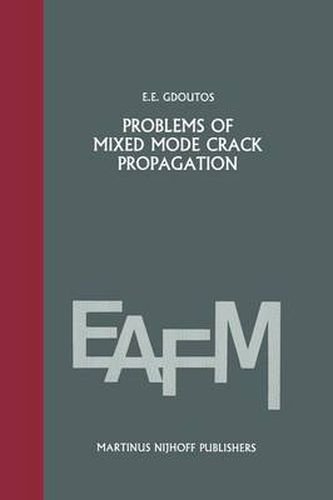Readings Newsletter
Become a Readings Member to make your shopping experience even easier.
Sign in or sign up for free!
You’re not far away from qualifying for FREE standard shipping within Australia
You’ve qualified for FREE standard shipping within Australia
The cart is loading…






This title is printed to order. This book may have been self-published. If so, we cannot guarantee the quality of the content. In the main most books will have gone through the editing process however some may not. We therefore suggest that you be aware of this before ordering this book. If in doubt check either the author or publisher’s details as we are unable to accept any returns unless they are faulty. Please contact us if you have any questions.
This is not just another book on fracture mechanics. In recent years, there have been many books published on this subject in an attempt to assess the state of the art and its applications. The majority of the work dealt with energy release rate or critical stress intensity factor and is applicable only to fracture toughness testing. The main reason for this restriction is that the energy release concept cannot easily be extended to mixed mode fracture that occurs in practice as the rule rather than the exception. Cracks will normally curve or turn because the direction of loading can change as a function of time. Their directions of growth cannot be assumed as an a priori and must be determined from a pre-assumed criterion. Analysts are still perplexed with selecting an appropriate fracture criterion because it requires much discernment and judgement. Criteria which often appeared valid for idealized situations are quickly dis credited when encountering more complex physical phenomena. Moreover, the claim of generality cannot be justified on the basis of agreement between theory and experiment for a few simple examples.
$9.00 standard shipping within Australia
FREE standard shipping within Australia for orders over $100.00
Express & International shipping calculated at checkout
Stock availability can be subject to change without notice. We recommend calling the shop or contacting our online team to check availability of low stock items. Please see our Shopping Online page for more details.
This title is printed to order. This book may have been self-published. If so, we cannot guarantee the quality of the content. In the main most books will have gone through the editing process however some may not. We therefore suggest that you be aware of this before ordering this book. If in doubt check either the author or publisher’s details as we are unable to accept any returns unless they are faulty. Please contact us if you have any questions.
This is not just another book on fracture mechanics. In recent years, there have been many books published on this subject in an attempt to assess the state of the art and its applications. The majority of the work dealt with energy release rate or critical stress intensity factor and is applicable only to fracture toughness testing. The main reason for this restriction is that the energy release concept cannot easily be extended to mixed mode fracture that occurs in practice as the rule rather than the exception. Cracks will normally curve or turn because the direction of loading can change as a function of time. Their directions of growth cannot be assumed as an a priori and must be determined from a pre-assumed criterion. Analysts are still perplexed with selecting an appropriate fracture criterion because it requires much discernment and judgement. Criteria which often appeared valid for idealized situations are quickly dis credited when encountering more complex physical phenomena. Moreover, the claim of generality cannot be justified on the basis of agreement between theory and experiment for a few simple examples.